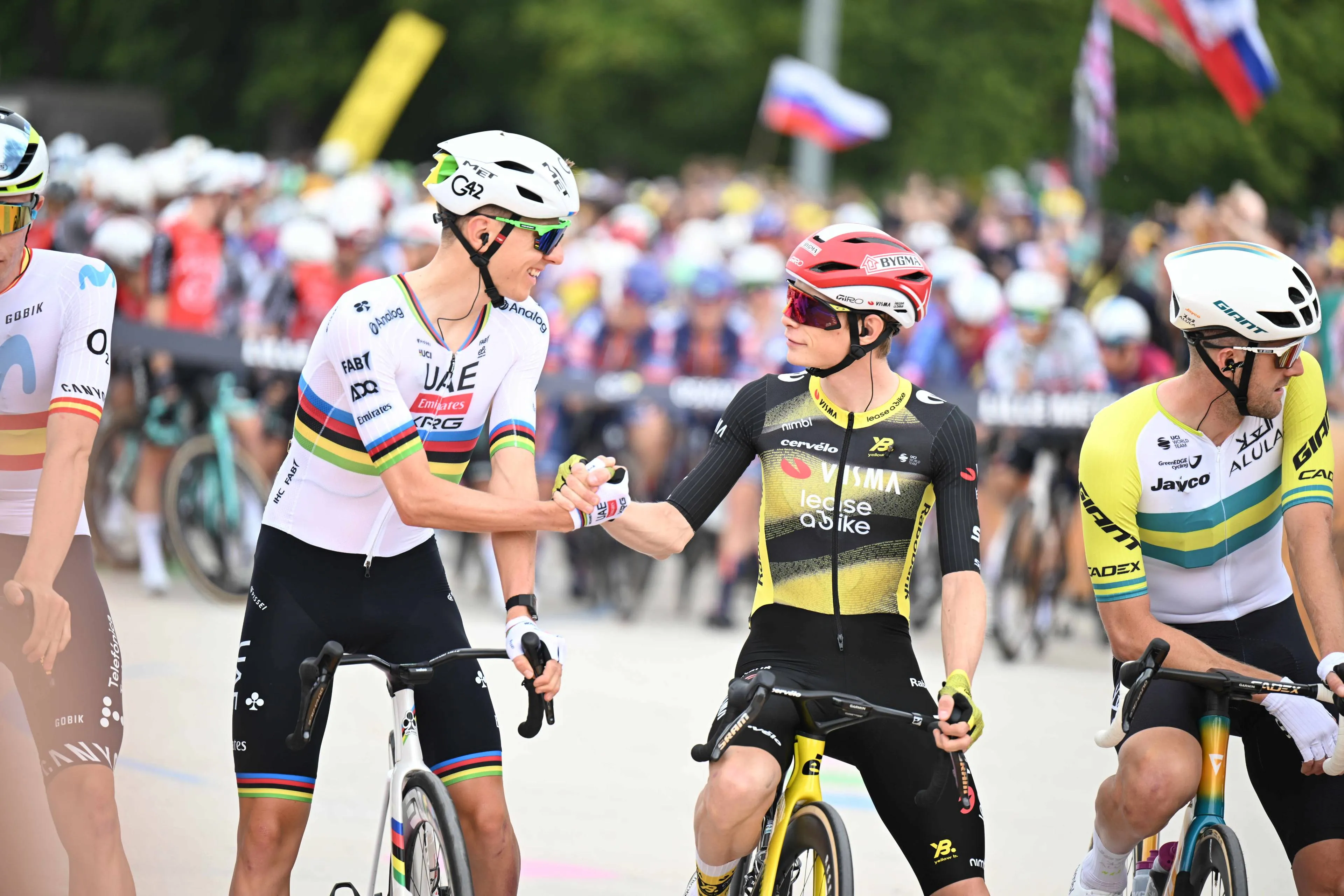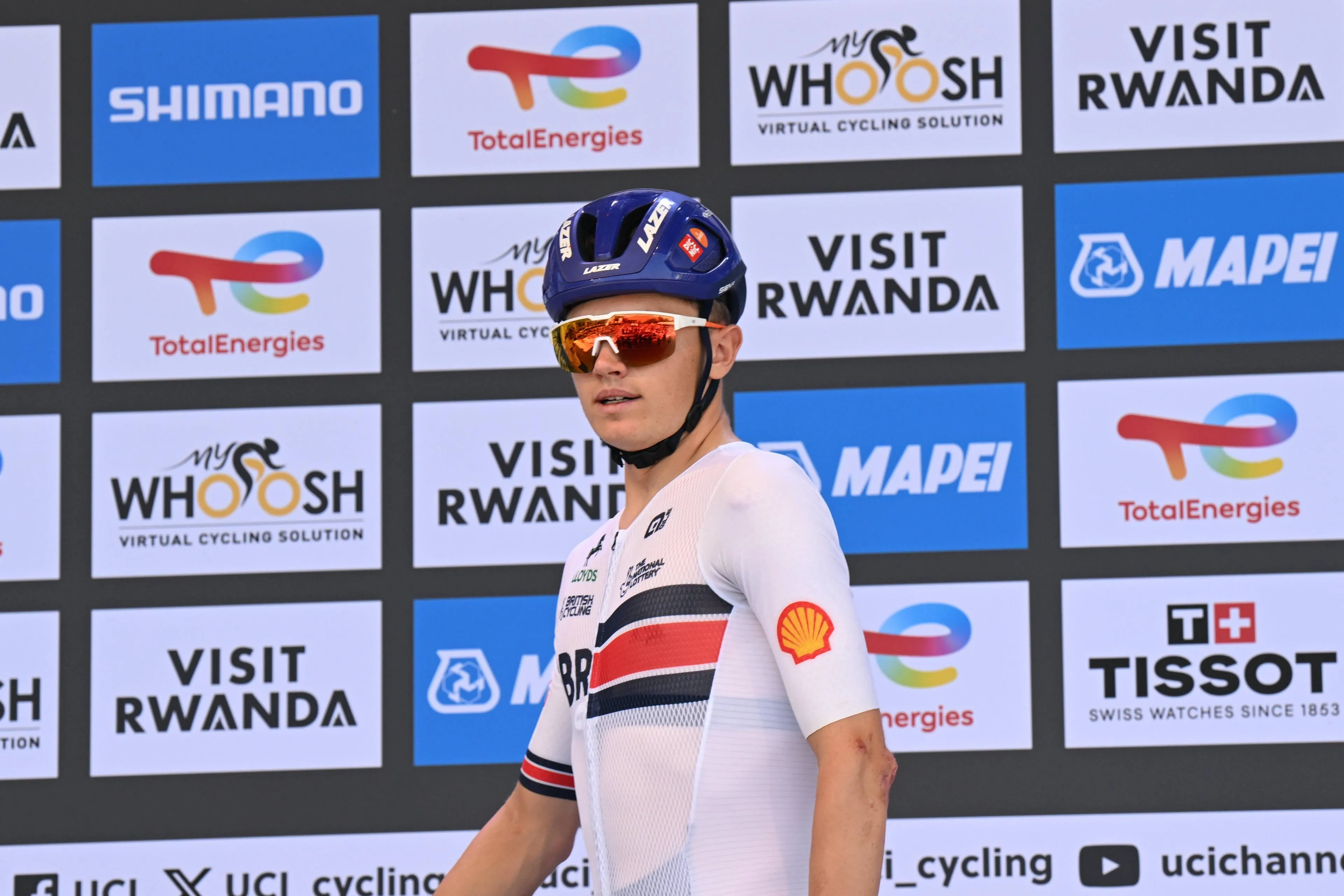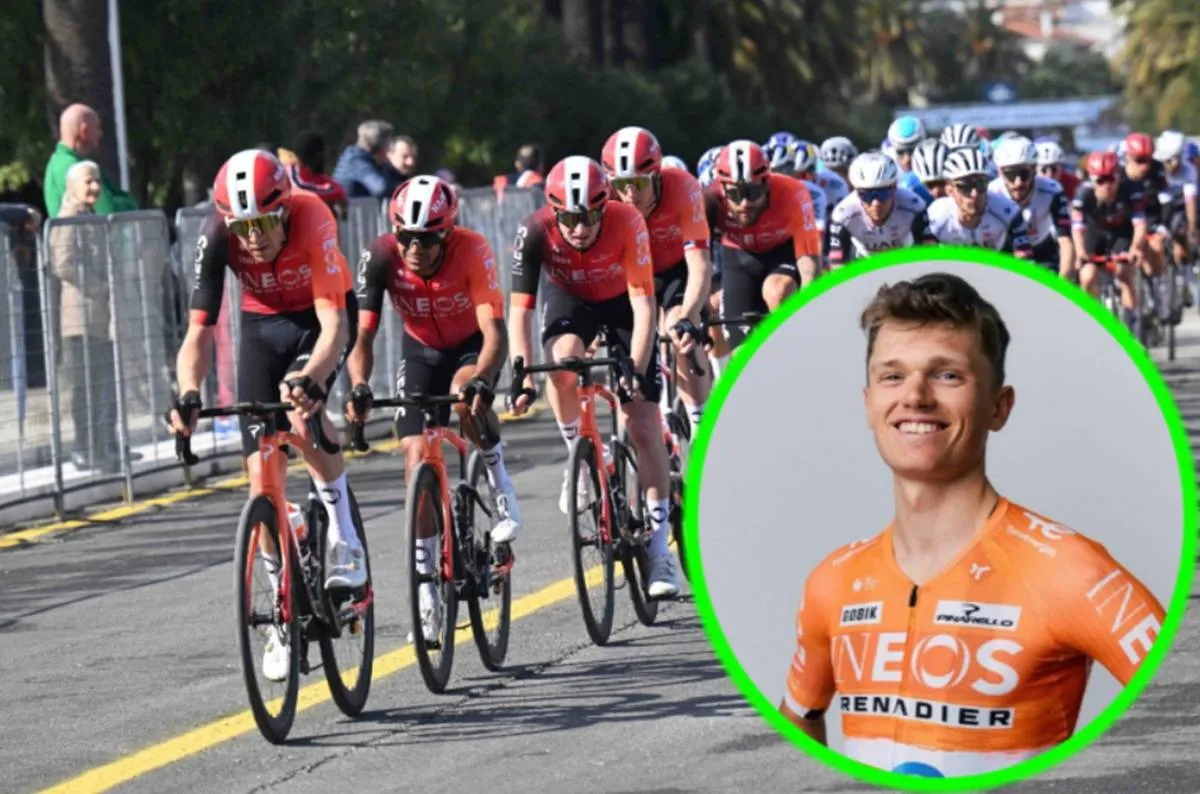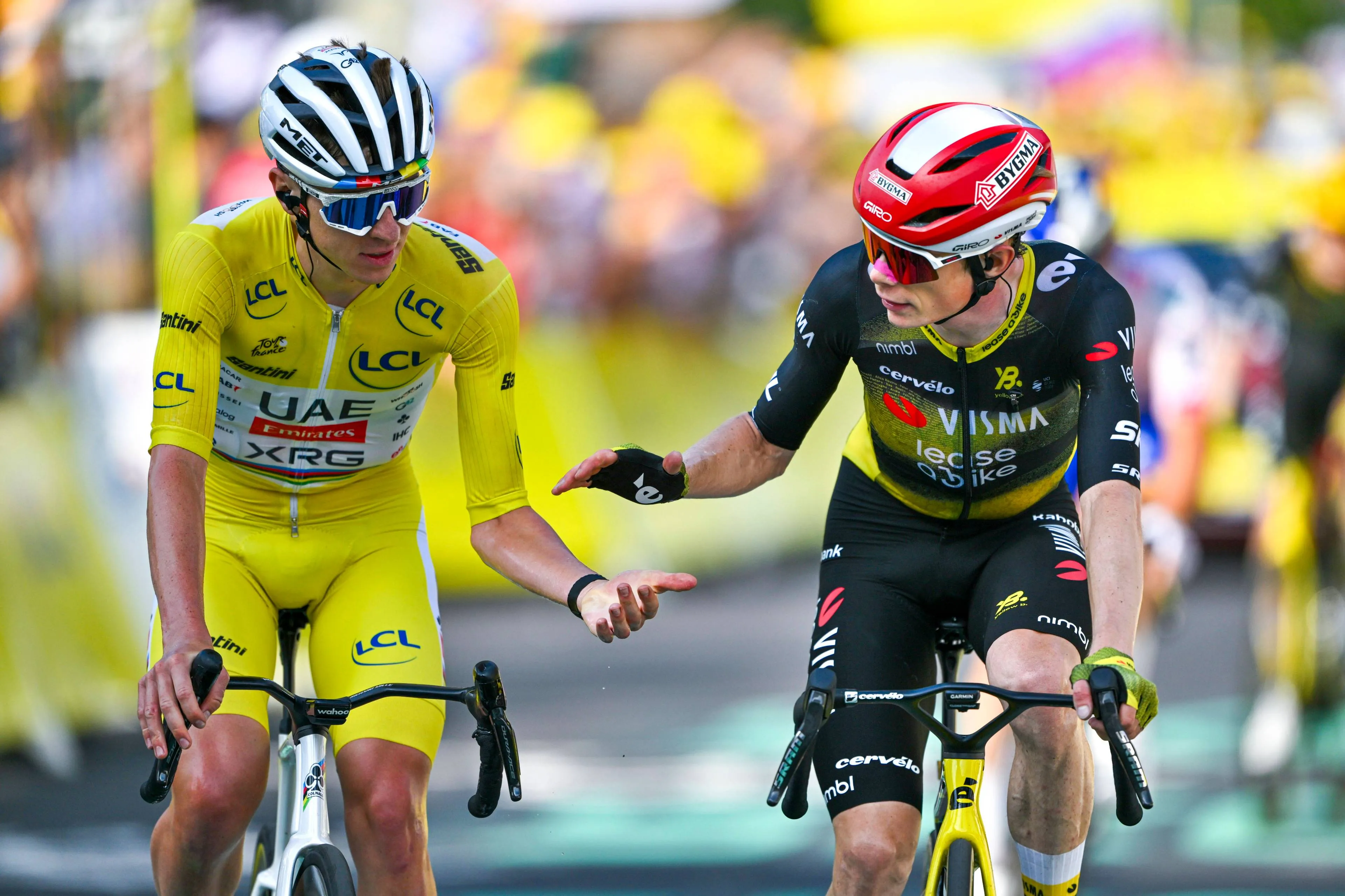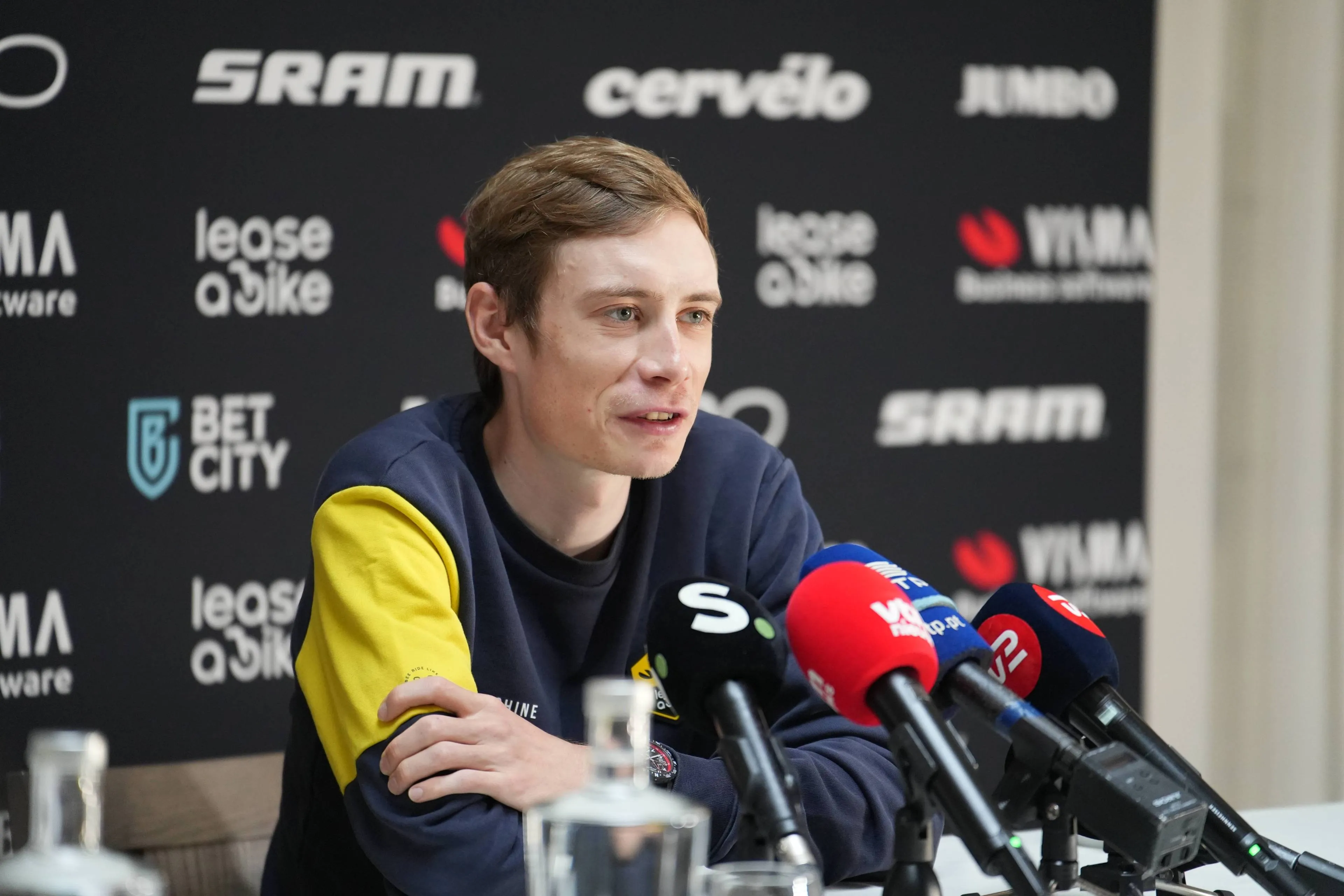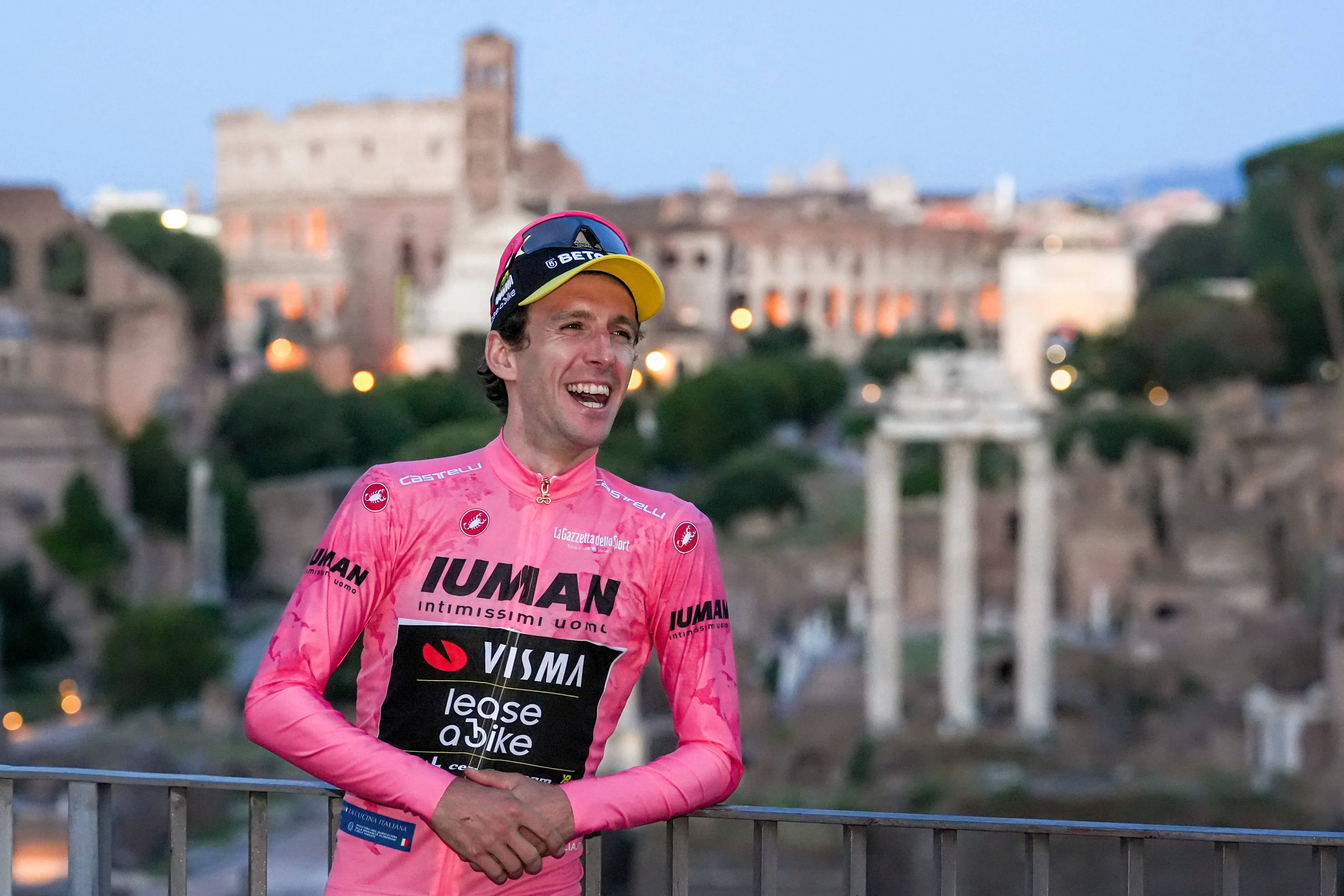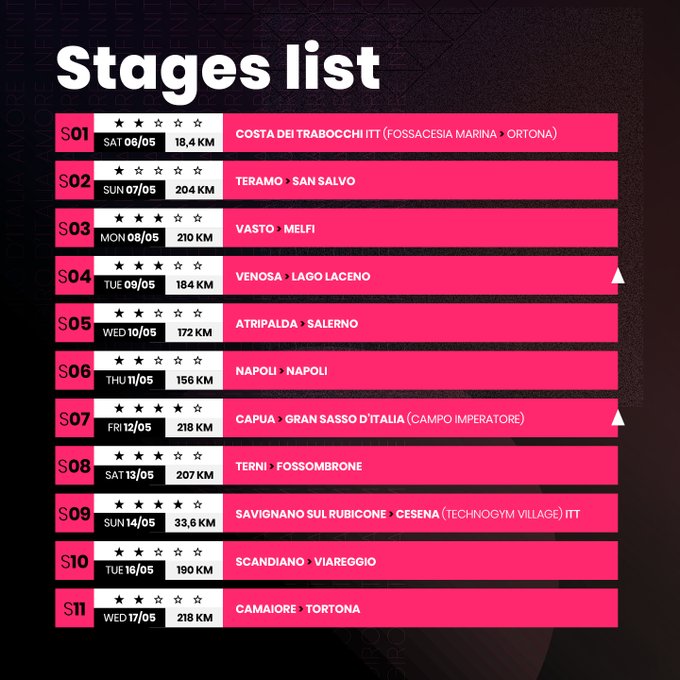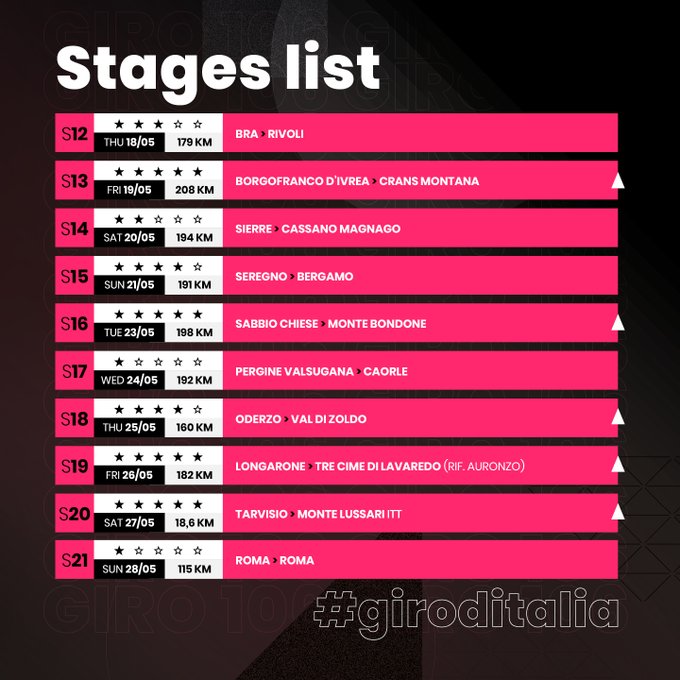COLUMN | 6 climbs where the 2023 Giro d'Italia can be won or lost
CyclingWednesday, 19 October 2022 at 14:49

The Giro d'Italia is known for it's brutal routes, and 2023 is going to be a particularly tough race with an incredibly heavy-loaded final week featuring four summit finishes. The race however will have climbs all throughout, and here are some which may decide the race.
The route includes a total of seven high-mountain stages, six of them with summit finishes. There will be other days that future tough ascents that can create some damage, however some days stand out.
Read also
Climb nº1
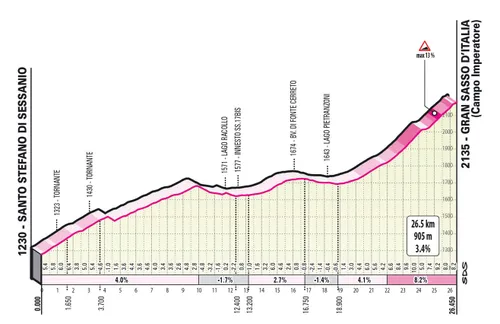
Stage 7: Gran Sasso d'Italia (Campo Imperatore). 26.5Km; 3.4%
In most Grand Tours the first mountain day is almost always calm and collected, as most riders look to just test their legs, see where they stand against their rivals, and take little risks so as to not lose time if things go wrong. The fourth stage to Lago Laceno should give good indications, so although the riders could be rather conservative at Gran Sasso d'Italia, the climb is shaped in a way that will with no doubt see gaps.
A long day with 218 kilometers in the legs, and with a time-trial already behind, it will be the day to start trying to make some difference. The climb features a total of 26.5 kilometers at 3.4%, not scary by any means, but there are two small descents, the climb is effectively split into three and the final section is the priority.
Last used in 2018 when Simon Yates took his first win of what was a thrilling edition, the climb proved to be explosive towards the end. Big gaps are unlikely to emerge, but this will be a meaningful test and those who don't have the legs to fight for the race win should be exposed here. The last 4.4 kilometers average over 8% despite a very small flat section, the gradients will be hard enough to make casualties within the bunch, and put some order into the general classification fight.
Climb nº2
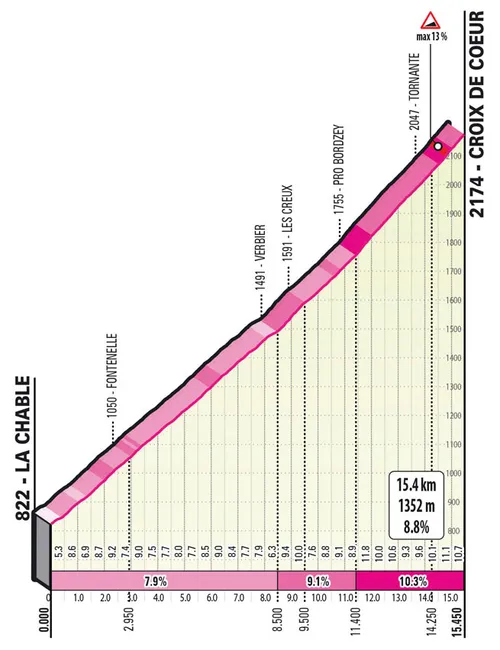
Stage 13: Croix de Coeur. 15.4Km; 8.8%
Stage 13 will be the first serious high mountain test. This day has a whole story in itself, it will feature over 200 kilometers and two massive mountain passes before the equally tough summit finish at Crans-Montana (13.1Km; 7.2%). The day also features a beautiful ascent that is a breath of fresh air in modern cycling, the Gran San Bernardo, which on it's own has 34 kilometers at 5.5%. This will be a captivating ascent surely no matter how it's ridden, it is likely to be the longest and/or longest climbing effort all riders will take on during the competitive season.
However what struck out to me the most was the presence of a climb between the two. Early rumours suggested both ascents, but it was unclear if there would be a third ascent. Luckily - for us, spectators - there will, the Croix de Coeur. What struck out to me is how this is the hardest ascent of the day, and perhaps the whole race. It's summit lies at almost 2200 meters of altitude, and it features 15.4 kilometers at 8.8%. Not only is this a true Alpine pass, little known to pro cycling, but it is brutally hard. It is similar to the Passo Giau or Alpe d'Huez in terms of gradients, but it is longer than both. It is a climb not too different to the Col du Grandon, which decided the Tour de France.
It will see the Crans-Montana ascent afterwards, but this colossal climb follows the already colossal San Bernardo. This combination of altitude and very long efforts, alongside the gradients where riders will barely be able to slipstream make it an incredibly dangerous ascent. On a bad day, ANY rider will lose his ability to fight for the race win. This is the most important day of the second week, and can be an unpleasant surprise to many.
Climb nº3
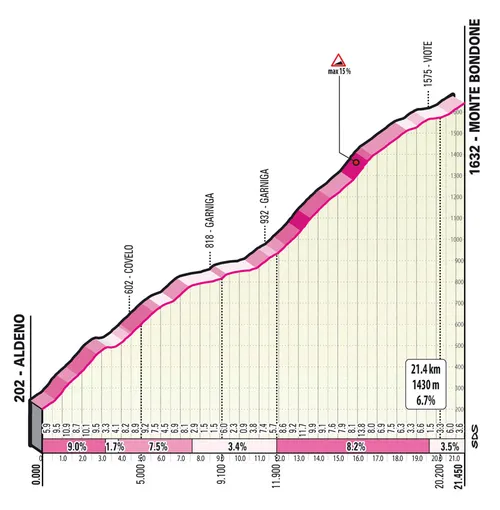
Stage 16: Monte Bondone. 21.4km; 6.7%
Starting off the third week is a mountain stage, sandwiched between a brutal finale to the race and the 13th stage, almost escapes the grasp of some fans. The day will feature the early ascent to the Passo di Santa Barbara (12.8Km; 8.3%) which is essentially an Alpe d'Huez, and features three more categorized ascents before the final climb.
You could argue the title belongs to Gran Sasso d'Italia, but the longest continuous summit finish of the race will be here at Monte Bondone. Again, the length of the climb will be a decisive factor, seeing it's 21.4 kilometers make for what will be almost one hour of continuous effort, albeit rather inconsistent in it's middle section. The climb late on features 9 kilometers at over 8% however, which means the riders will have nowhere to hide, and will effectively have to thrive on a very draining effort.
This is the first day of the third week, but you can't reasonably expect fresh legs at Bondone, the same way you can't expect world-class watts. Endurance and resistance will be a key factor to this Giro, and Bondone is only the appetizer for an eye-watering final week.
Climb nº4
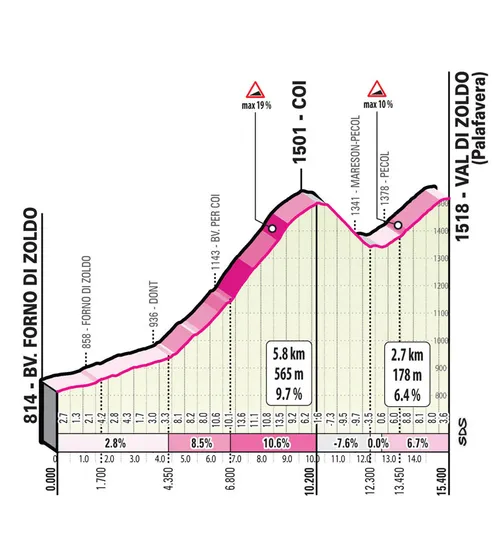
Stage 18: Coi. 5.8Km; 9.7%
Stage 18. Coming before the Dolomite monster and the gruesome Monte Lussari ascents, stage 18 may be a bit of a stalemate. In the same way, riders may take this standard mindset to try and surprise. Stage 18 will be a different dish than what is usually served in the final week of the Giro, but something that has in 2022 been very successful, as Jai Hindley, Richard Carapaz and Mikel Landa battled on the slopes of the "gentle" Santuario di Castelmonte on the eve of the queen stage.
The idea must be the same with this stage, although it features two long and hard ascents throughout the day. The final set of climbs however are explosive, different types of efforts to the other important stages, and also terrain where tactics and team play can come into the table more. The particular ascent that has grabbed my attention is the climb to Coi, near the finale at Val di Zoldo. It features 5.8 kilometers at 9.7%, a similar ascent to Peña Cabarga which has been one of the Vuelta's most spectacular climbs. The gradients reach 19%, and in the place it stands on the race, not many eyes lie on this relative unknown.
I expect a lot from this day, personally. My romantic cycling appeal likely, but I see this as an opportunity for riders to have a more aggressive display, in terrain that better suits risk takers. The hilltop finish at Val di Zoldo will either ways see some moves surely, regardless of what happens beforehand, as every second can count!
Climb nº5
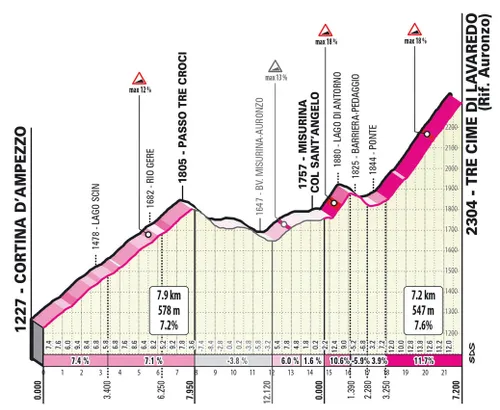
Stage 19: Tre Cime di Lavaredo. 3.9Km; 11.7%
The return of the beast! Tre Cime di Lavaredo is not the longest climb of the race, or the steepest, or the highest. Hell, if the riders had the option to only climb it everyday and not have to climb anything else, I'm sure many would take it. However the final climb, hosting 4 kilometers at 12% all the way into 2300 meters of altitude, a climb last used in 2013 when a snowstorm cut most of the day, and Vincenzo Nibali emerged from the snow to take a glorious final gunshot on his rivals' winning ambitions at the Giro.
Deep inside the beatiful dolomites, this is never a climb that's tackled alone. In no way, the 19th day of racing in fact features over 5000 meters of climbing. Not bad huh! Campolongo, Valparola, Giau and Tre Croci will cook up what will be the main plate in a Giro that is stacked with big meals. Tre Cime di Lavaredo will be the big climax of the road stages, and it's beautiful peaks will make for one of the most scenic moments of the race - as long as the skies stay clear this time!
Climb nº6
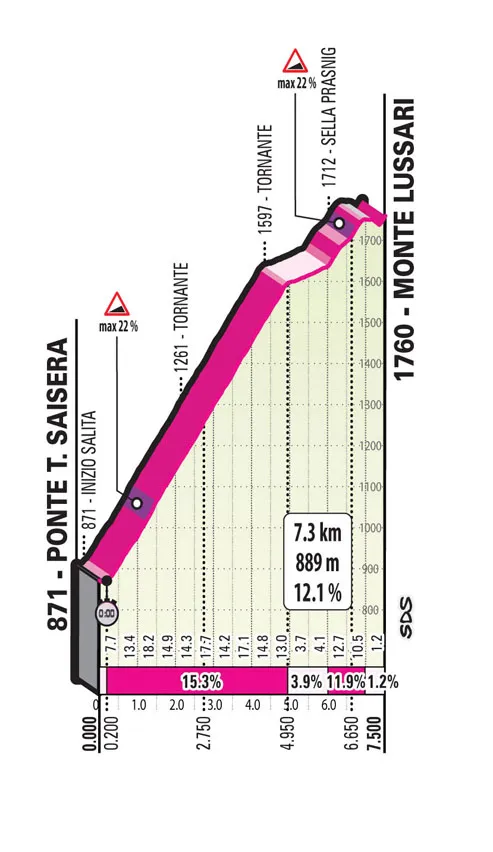
Stage 20: Monte Lussari. 7.3Km; 12.1%
This is perhaps the ascent that has been anticipated the most, and will appropriately be the final true climb of the Giro d'Italia. Located in the Julian Alps, the Monte Lussari will be an incredibly hard, and perhaps the hardest ascent of the whole route. With no doubt this will be a brutal climb for all riders, specially at the end of a three week race and off the back of two harsh mountain stages, however the ascent in itself needs no explanation.
On the penultimate day of the race, the 18-kilometer time-trial will end in the climb. Officially the ascent is 7.3 kilometers long at 12.1% which in itself is very hard, but it doesn't reveal the true hell the riders will face at the start. Not too different from the famous Angliru over in Spain, it features 4.7 kilometers with an average of over 15%, maximum gradient of 22% and 0 restbite. I could not personally fathom what it is like to ride up something like this!
All riders who intend on completing the Giro - which I doubt includes many sprinters, to be quite honest - will be forced to climb up it. Get ready to see some 'granny gears', weird tech, and perhaps less positively - and I hope to be wrong - criticism from some riders and team staff.
claps 0visitors 0
Just in
Popular news
Latest comments
- I take him for his word and the beautiful letter of retirement he penned.Good health and family life as well.Chapeau! God speed straight on till morning.
 Brucegel10-01-2026
Brucegel10-01-2026 - If there is something, knowing cycling it will only come out in a decade. Another oddity is the money angle. Had he wanted to, he could probably have arranged to earn more in the next 2 years than he did in the past.Mistermaumau10-01-2026
- And yet, so many who get money get worried about it so obviously it’s not easy for everyone.Mistermaumau10-01-2026
- Maybe Simon's close bond with his brother made his position untenable, for instance if Visma were planning an unwelcome surprise for UAE.Hills3310-01-2026
- You forgot the tax angle which says quite a lot about people who are already well set up. And he’s got rid of the money hasn’t he, or rather invested it long-term for his family, people who like money spend differently.Mistermaumau10-01-2026
- 🤣 I saw that too. Guess he buys in lower tax bracket so he can buy moremd197510-01-2026
- Exactlymd197510-01-2026
- Leave now and we don't go public with our findings. Win Win
 Front24210-01-2026
Front24210-01-2026 - Knowing even less about Jonas than they do about Tadej, journalists seem determined to emphasise the differences between them. They all pepper their articles about Jonas with the words family, quiet and candid. Then they have to make Tadej sound the opposite. If Tadej started a family they would be confused.Hills3310-01-2026
- He hung on there, in the tour, hell either sink or swim, let's hope the latter!
 leedorney10-01-2026
leedorney10-01-2026
Loading
👀 Discover now the Route of the 2023 Giro d'Italia! 👀Scopri adesso il percorso del Giro d'Italia 2023! #Giro 👇
Write a comment


